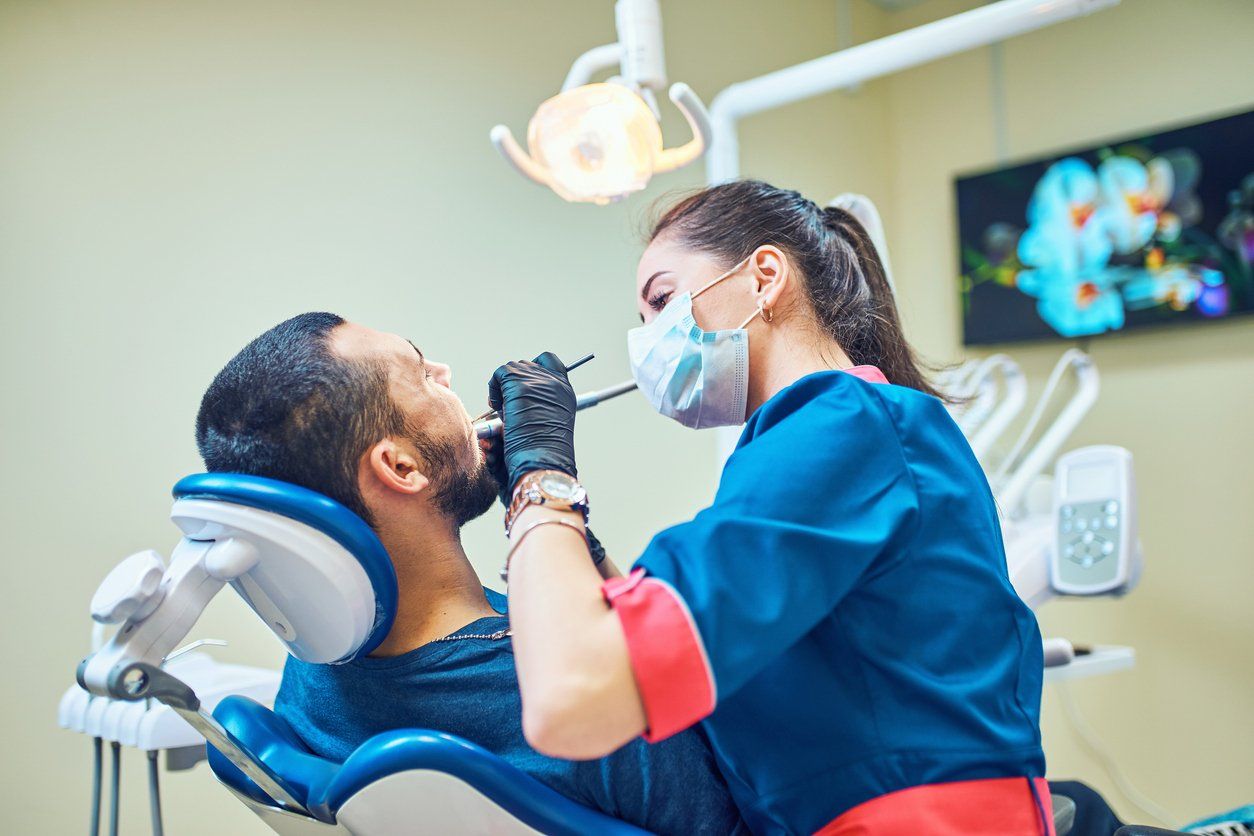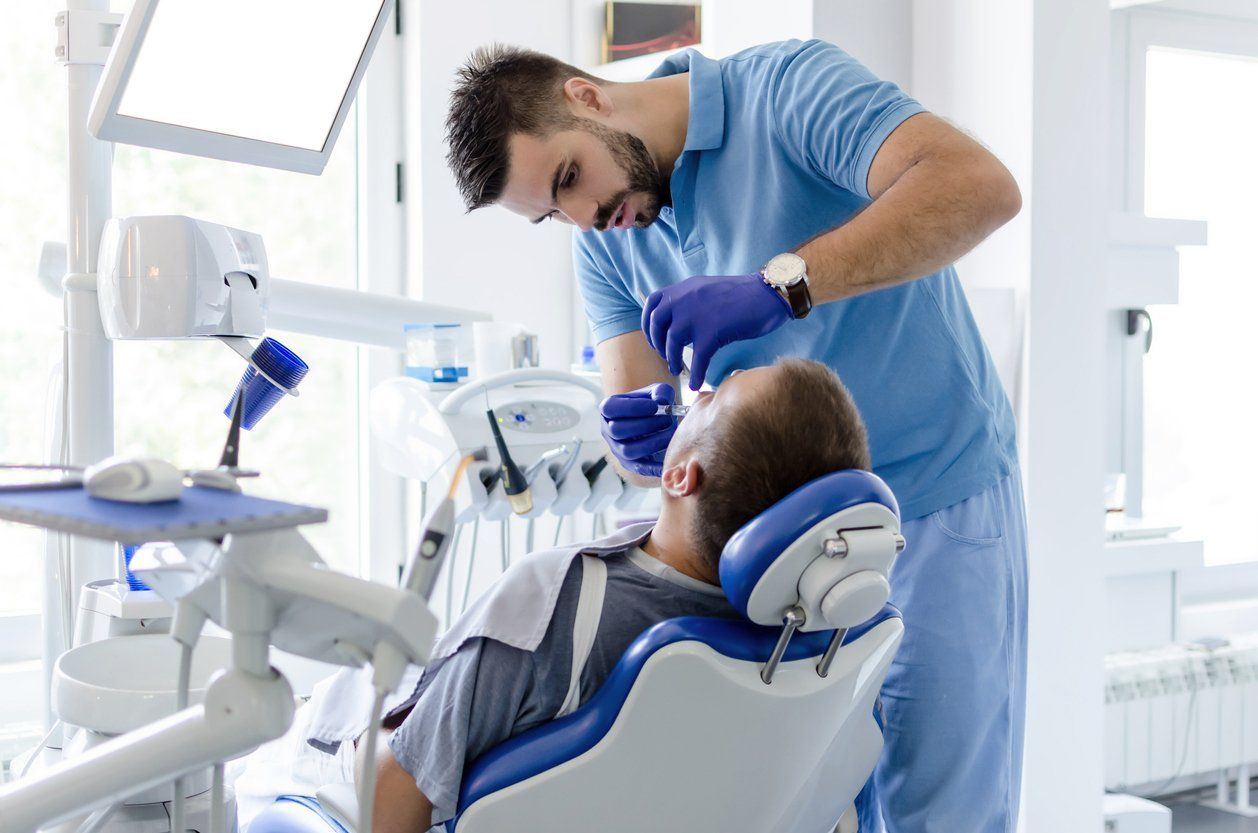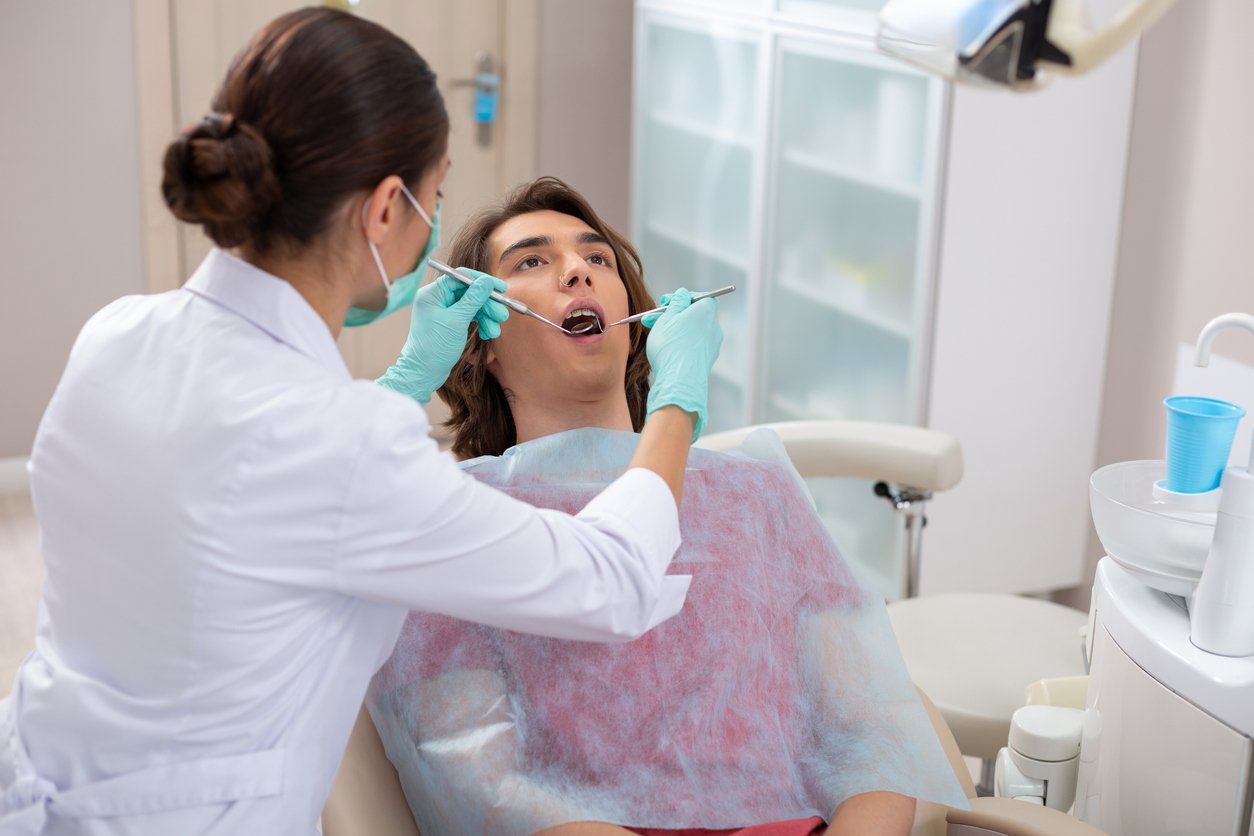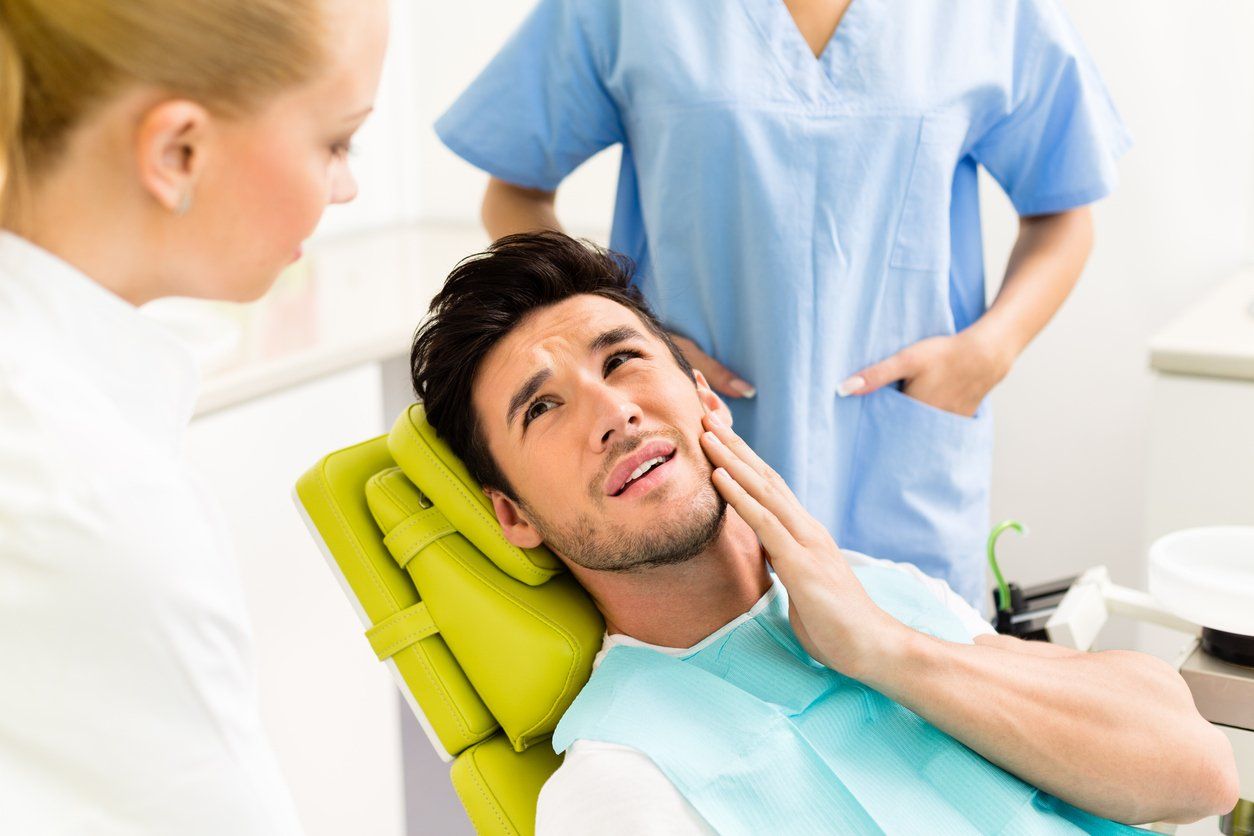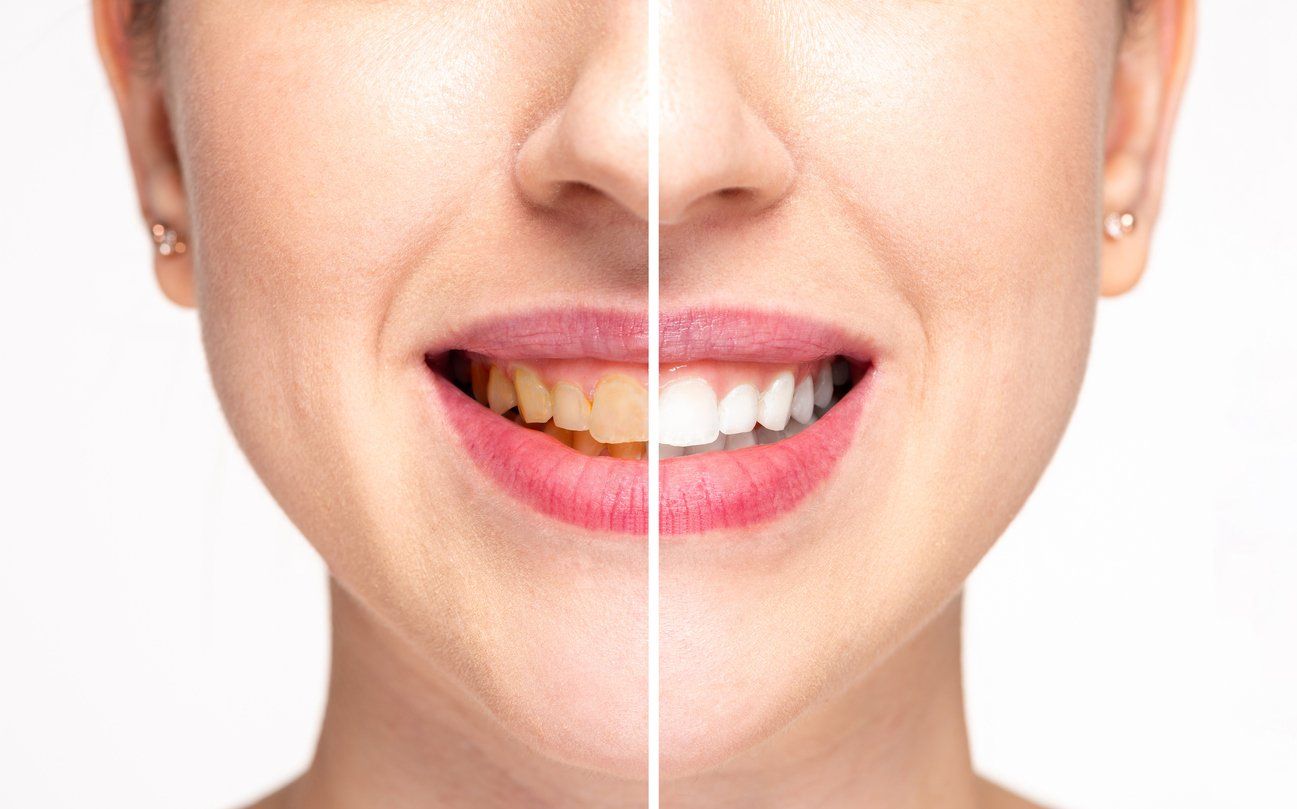Everything You Need to Know About Dental X-Rays
Innovative technology like the dental X-ray is such a common aspect of our lives that we hardly think twice about it. However, this incredible technology allows dentists to prevent dental issues, treat complicated conditions, and even save lives. By allowing a dental team to get a close-up view of your teeth, bones, and jaw, preventative and diagnostic X-rays are a vital aspect of oral health.
Let's take a closer look at this now-commonplace technology. When was it discovered? What types of X-rays can you get? Are they safe? And what can you expect when you get an X-Ray taken?
Brief History of the X-Ray
You've probably heard of ultraviolet (UV) light waves from the sun, infrared heat emitted by our own bodies, and visible light that we can see. X-rays are simply another wavelength of light— that can allow dentists to "see through" human tissue.
Wilhelm Conrad Roentgen, a German physicist, discovered X-rays by accident in 1895. Rontgen was working with a cathode-ray tube in his lab when he suddenly noticed that the tube created a fluorescent glow when he applied a high voltage. When he covered the tube with heavy paper, the light easily pierced through the paper.
Through further experiments, Roentgen found that the X-ray light could pass through many materials, including human tissue. In fact, one of the first X-rays ever taken was of his wife Bertha's hand. Since then, medical and dental X-rays have advanced considerably. Now, they offer a safe, effective way to reveal details about previously hidden issues in bones and teeth.
Why Do I Need X-Rays?
When you see a new dentist, you'll often get X-rays done along with your physical exam. Though your dental team can discover a lot about your teeth from examining your mouth, X-rays are often necessary to highlight areas of special concern. For example, your dental X-raywill show your doctor:
- Decay. An X-ray will reveal decay to your dental team, highlighting difficult-to-catch areas between the teeth. In addition, X-rays can reveal pockets of decay developing underneath an existing filling.
- Bone loss. For those with gum disease, X-rays can reveal the beginnings of bone loss.
- Infections & abscesses. X-rays can hone in on damage and infections in the sensitive root canal area of your teeth. In addition, they can highlight existing abscesses between your teeth and gums or at your tooth's root.
- Implants . If you're getting tooth implants or dentures, getting an X-ray can help your dentist plan your procedure.
In general, X-rays help your dentist address existing problems, keep an eye on issues that might develop, and create a plan to get your teeth in optimal shape.
Types of X-Rays
Wondering what type of X-ray you'll get when you visit your dentist. In general, it depends on your unique oral health situation. First, there are two categories of X-rays, intraoral and extraoral:
Intraoral X-Rays
Focused on the inside of your mouth, intraoral X-rays are the most commonly used by your dentist. Let's look at the different types:
- Periapical. In this type of X-ray, your dentist will get a good look at your entire tooth, all the way from the crown into the bone.
- Bite-wing. Helpful for determining if decay is present between back teeth, a bite wing X-ray is more focused on the teeth in the back of your mouth.
- Occlusal. Often used to highlight children's baby and adult teeth, an occlusal X-ray can reveal a patient's bite (how the teeth fit together.)
Extraoral X-Rays
Less commonly used, extraoral X-rays are more focused on the jaw and skull than on the teeth. Instead of searching for issues like cavities, extraoral X-rays look for major issues like impacted teeth, development of the jaw, and issues with the temporomandibular joint (TMJ).
- Panoramic. One of the most common extraoral X-rays, the panoramicis used to show a comprehensive view of your oral health, including your sinuses, jaw, joints, and bone. It's most commonly used if a patient needs orthodontic work or an implant placed.
Are X-Rays Safe?
You may have heard some conflicting information about the safety of radiation like X-rays. However, you need not be concerned about the small amounts of radiation found in X-rays. Firstly, your organs will be protected by a lead apron throughout the process. Secondly, X-rays emit very minimal radiation. To put it in perspective, if you got four bitewing X-rays, the total radiation would be the equivalent of a two-hour airplane ride.
Can Children Get X-Rays?
For children, X-rays can provide vital information about baby teeth, permanent teeth, and structure of the jaw and bite. The American Academy of Pediatric Dentists states that there is very little riskin X-rays for children. Since the amount of radiation is so small — and dentists are trained to be especially careful to minimize radiation exposure for children — there should be no need to worry. If you have any other concerns, be sure to talk to your dentist.
Can Pregnant Women Get X-Rays?
According to the American Pregnancy Association, X-rays are generally considered safe during pregnancy, when necessary. This is because dental X-rays are focused on the mouth, while your abdomen and pelvis are protected by a lead apron. In the case of a dental emergency, the benefits of X-rays almost certainly outweigh any small risks. However, it's important to make sure you inform your dentist that you are pregnant so that they can make the best decision for your situation. In many cases, they will wait to do X-rays until you are no longer pregnant — just to be safe.
What to Expect from a Routine Dental X-Ray
If your dentist is asking you to have X-rays taken for preventative or diagnostic purposes, it can be helpful to know exactly what to expect:
- To make sure X-rays are as safe as possible, your dental team will cover your chest and abdomen with a lead apron that will protect your organs from radiation.
- While you're getting your X-rays taken, you will usually bite down on a piece of plastic. Then, you'll remain still so that the X-ray machine can do its job. Your dental team will coach you and adjust as needed.
- Because dental technology is so advanced, the whole process is very brief. Afterwards, your dentist will look at your X-ray images and use that information to come up with an oral health plan.
Dental X-Rays are an Important Tool for Oral Health
At Marie Simon Dentistry, we use X-rays to help diagnose, prevent, and treat dental issues. Rest assured that our compassionate, professional staff is well-equipped to ensure a comfortable and safe X-ray experience. If you are in the Avon Lake, Sheffield Lake, Bay Village, Avon, and Westlake areas in Ohio, reach out to Marie Simon Dentistry with any questions — or to schedule a consultation.

